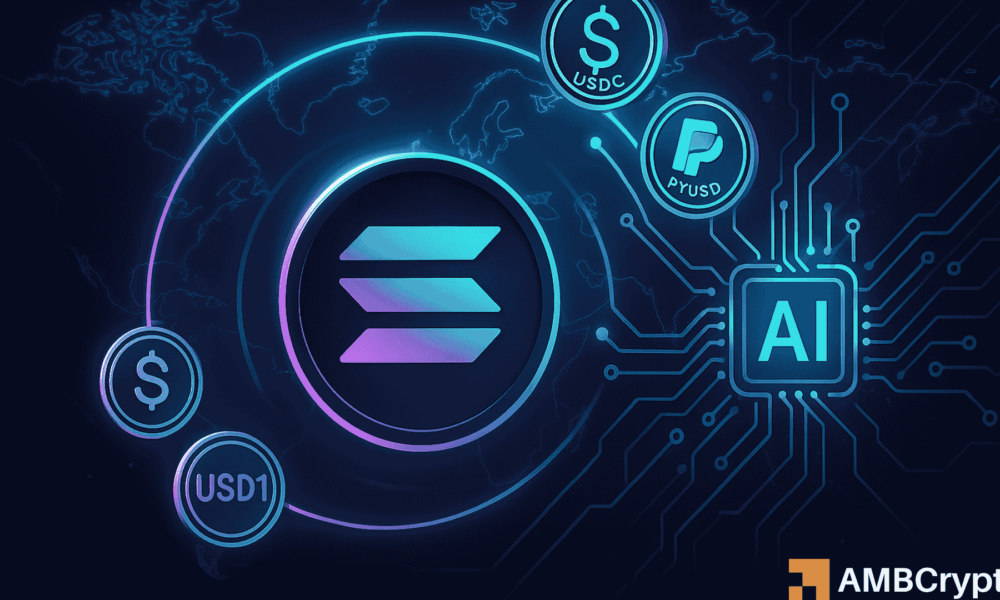The Future of Blockchain: Insights from the State of Crypto 2025 Report
The blockchain landscape is rapidly evolving, with significant shifts occurring in technology and market dynamics. The recent State of Crypto 2025 report by Andreessen Horowitz (a16z) has put the spotlight on three major themes: Solana’s impressive growth, the increasing prevalence of stablecoins, and the merging of artificial intelligence (AI) with cryptocurrency infrastructure. This article delves into the key takeaways from the report, highlighting why Solana is gaining traction, the role of stablecoins in the modern economy, and how AI is framing the future of financial transactions.
Solana: The Fastest-Growing Blockchain Ecosystem
One striking finding of the a16z report is that Solana has emerged as the fastest-growing blockchain platform. Increased developer engagement, reported to have surged by 78% in just two years, contributes significantly to this achievement. More importantly, Solana’s ecosystem is generating more revenue from decentralized applications (dApps) than Ethereum and Bitcoin combined, boasting over $3 billion in revenue attributable to Solana-based apps in the past year. The report suggests that Solana’s architecture—an all-in-one stack integrating DeFi, NFTs, and consumer apps—plays a crucial role in attracting developers, setting it apart from Ethereum’s fragmented landscape. As Solana continues to assert its impact, this trend is redefining how blockchain ecosystems operate, moving from speculative ventures to robust economies.
The Rise of Stablecoins in Global Finance
Stablecoins have rapidly become an integral part of the digital financial ecosystem, referred to in the report as “the dollar’s on-chain twin.” In the last year, stablecoin transactions reached an astonishing $46 trillion, significantly exceeding Visa’s transaction volumes. Moreover, issuers of stablecoins collectively hold over $150 billion in U.S. Treasuries, signaling their growing significance within the financial sector. The ongoing regulatory developments, such as the anticipated GENIUS Act in the U.S. and MiCA in Europe, are likely to enhance the legitimacy of stablecoins, leading to an expected market cap of over $3 trillion by 2030. In various emerging markets, such as Argentina and Nigeria, stablecoins are addressing the challenges posed by volatile currencies and limited banking facilities, thereby serving as a vital financial tool.
The Intersection of AI and Crypto
Another intriguing insight from the report is the potential convergence of AI and blockchain technology. a16z forecasts a future where AI agents will act as "machine customers," leveraging cryptocurrency systems for payments and management. This could revolutionize machine-to-machine transactions, anticipated to reach an estimated $30 trillion by 2030. Blockchain protocols that are AI-compatible will facilitate this transformation, blurring the lines between conventional financial infrastructure and autonomous digital intelligence. As these technologies integrate, they will create an economy where value management occurs on-chain, redefining the financial landscape and potentially enhancing operational efficiencies across industries.
Institutional Momentum Behind Blockchain
The year 2025 is posited as a pivotal moment for mainstream blockchain adoption, supported by various institutional advancements. Notable developments such as BlackRock’s ETF expansion, Circle’s planned IPO, and PayPal’s impending stablecoin launch indicate a growing alignment between finance and blockchain technology. This "institutional phase" is characterized by heightened focus on capital efficiency, regulatory clarity, and practical on-chain applications, rather than mere speculation. As traditional financial entities increasingly recognize the value of blockchain, the infrastructure required for a more robust digital economy is taking solid form.
A New Era for Blockchain Technology
The findings in the State of Crypto 2025 report shed light on the evolving objectives of the blockchain ecosystem. Solana’s accelerating developer activity, the substantial everyday utility of stablecoins, and the burgeoning intersection of AI and finance signify that crypto is maturing beyond mere speculation. As the technology continues to develop, it is transforming into a backbone for digital economic activities, positioning itself as an essential infrastructure in global commerce. The transition from speculative interest to real-world applicability marks an important evolution in how cryptocurrencies are perceived and utilized.
Conclusion: Embracing the Future of Crypto
As the blockchain ecosystem navigates through this transformative period, it’s clear that the next chapter will be shaped by innovations within Solana, the vital role of stablecoins in the global financial system, and the synergy between AI and blockchain technologies. The data-backed insights presented in the a16z report illuminate a future where cryptocurrency is not merely about fluctuating price charts but emerges as a foundational component of the worldwide digital economy. As adoption gathers momentum, embracing these key trends will undoubtedly define the trajectory of blockchain technology in the years to come.


